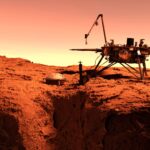JUpiter ICy moons Explorer (JUICE) is a large ESA mission, in which Astronika takes part together with RPWI consortium led by the Swedish Institute of Plasma Physics. Astronika led the development, testing and integration of both LP-PWI and RWI instruments. With successful delivery of LP-PWI, our company now fully developed the deliverable models of RWI, which await ‘finishing touches’ testing.
The studies performed by our instruments would enable the scientific community to find answers to questions about the evolution of the Solar System and life-sustaining conditions within it, especially within the Jupiter System. RPWI together with other instrument packages on board of JUICE will allow for complementary studies of Jupiter, Europa, Callisto and Ganymede. As previously with many ambitions space missions, JUICE ‘follows the water’.
The spacecraft will be launched in april 2023 using a unique launch window with 5 gravity assists in the interplanetary transfer (Earth, Venus, Earth, Mars, Earth). After passing such a diverse interplanetary environment, the spacecraft will reach Jupiter in 2030 after 7.5 years of journey.
Instruments for special missions
RWI (Radio Wave Instrument) was designed and developed using a number of Astronika’s technologies.
The antennas were built from beryllium copper tape springs, which allow for structural integrity and predictable deployment. After deployment the tapes take form of tube with 10 mm diameter – explains Marta Tokarz, Astronika member of the Board for Business Development and Technical Lead of RWI – our antennas weigh approximately 2 kilograms and deploy to 2.5 meters each. The technology we used allowed for low mass, compactness and energy-savings, which is extremely crucial in every space mission. Every additional gram, cubic centimeter and watt generates costs and potential strains for mission development.
Our instruments utilize multiple other technologies, like velocity control during deployment, some of which were patented by Astronika. The production and testing process utilized our own facilities – manufacturing workshop, systems integration laboratory, ISO6 cleanroom and bake-out vacuum chamber.
Eventually, the antennas will be mounted to the spacecraft at the last segment of MAG-boom, which will allow for its further displacement from the spacecraft disturbances.
The antennas will be deployed when JUICE reaches Low Earth Orbit, so at the beginning of the journey. After reaching Jupiter System, they should allow for measurements of three vectors of the electric field in HF band (0.08 to 45 MHz). The measurements will allow for further study of Jupiter’s magnetosphere and its moons – said Łukasz Wiśniewski, member of the Board and company’s PM of JUICE.
Off to the Jupiter in 2023
The development of RPWI instruments started in 2010, when team consisting of current Astronika employees engaged in first design and development activities. In the scope of the project, RPWI consortium led by IRF Uppsala develops instruments for Airbus – the spacecraft’s integrator. RPWI consists of Langmuir Probe – Plasma Wave Instrument and Radio Wave Instrument. The former was delivered during Summer 2020.
RWI follows the footsteps of the LP-PWI. The instrument went through variety of environmental tests that exhibited its reliability and performance in relevant environments. With the vibration tests concluded, RWI will pass thermal vacuum chamber tests at ESTEC in Noordwijk, NL. When the results are promising, it will be transported to the main integrator to await for the journey to space.
Media about this event



